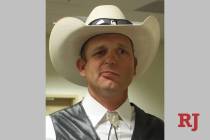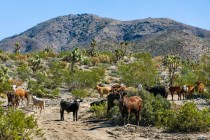Desert tortoise faces uncertain future amid Bundy conflict

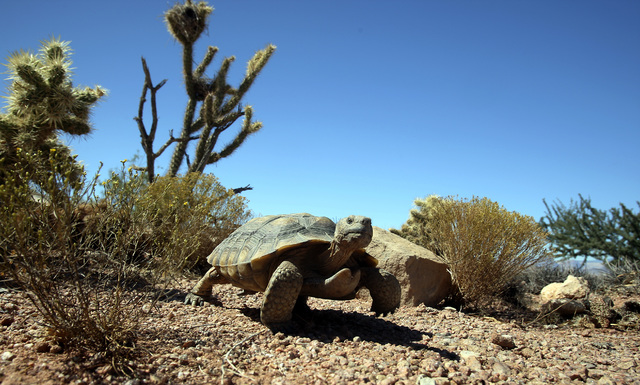


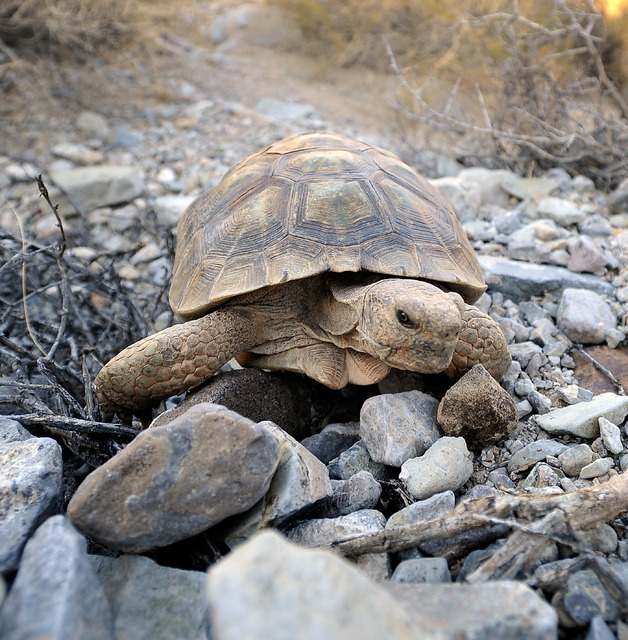
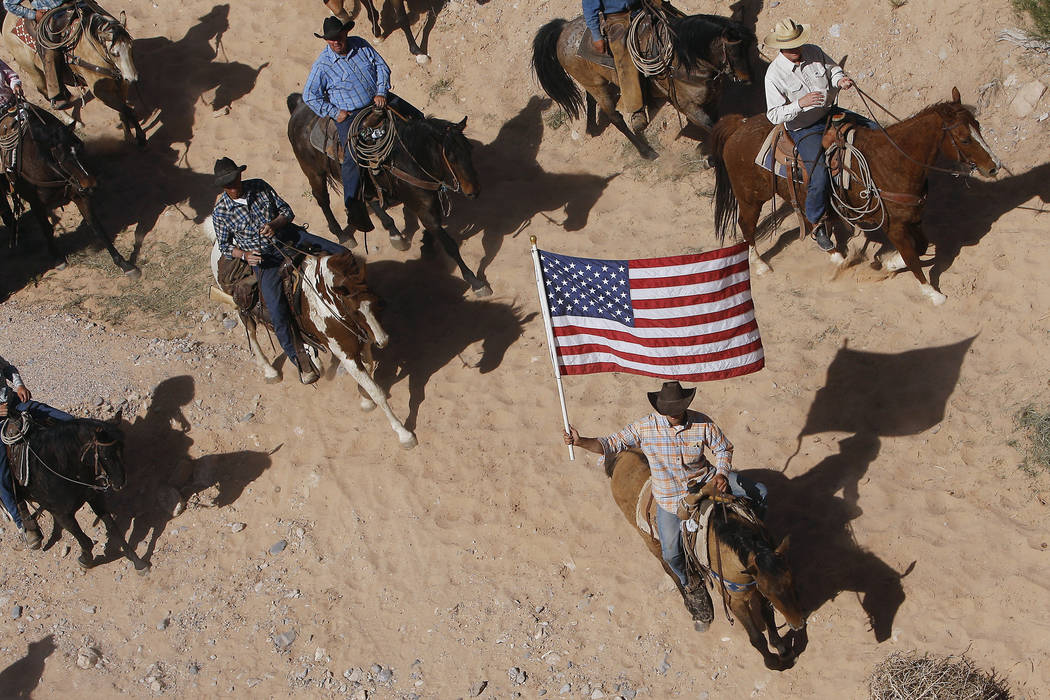
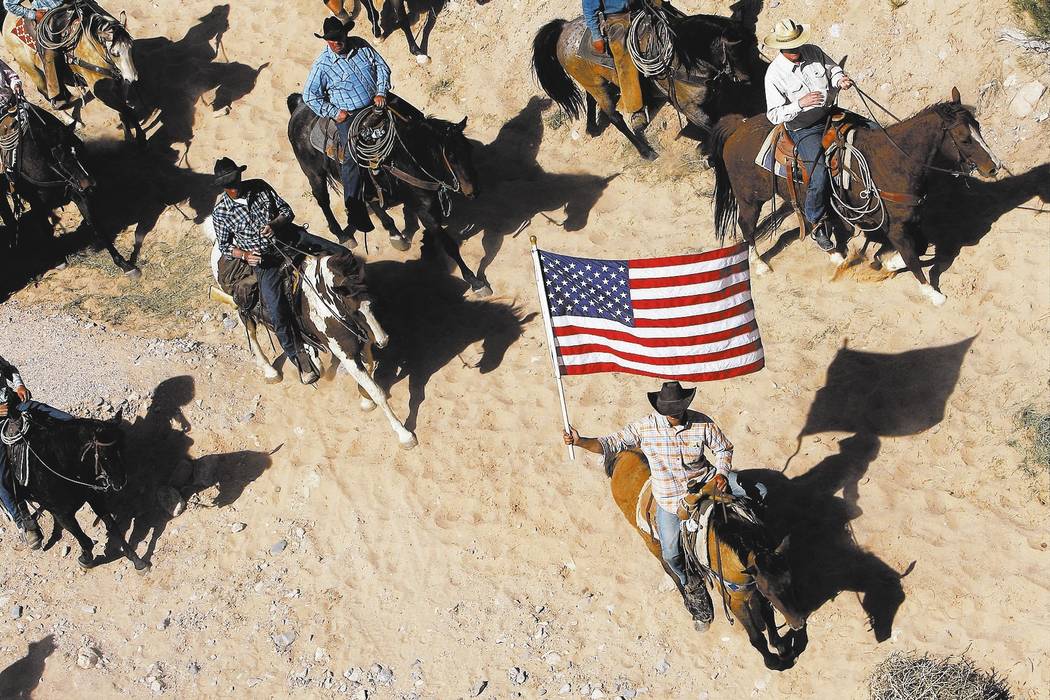
It all began with the tortoise.
In 1990, federal officials listed the Mojave Desert species as threatened across its range, touching off a series of new regulations and initiatives aimed at saving the long-lived reptile.
One of the people caught up in the effort to save the tortoise was a Bunkerville rancher named Cliven Bundy, who didn’t take kindly to being told to limit the number of cows he was grazing on public land in northeastern Clark County.
So began a decades-long dispute that would inflame anti-government sentiment, turn Bundy and his family into heroes of the militia movement and nearly end in bloodshed in 2014.
But despite all that has happened in the two decades since Bundy famously “fired” federal range managers over protections for the tortoise, the situation on the ground is largely unchanged. Bundy’s cattle continue to roam the vast swath of federal land 80 miles northeast of Las Vegas, and the tortoises are still out there, too.
In fact, the reptile’s numbers appear to be increasing in that area.
At least one expert studying the species freely admits he doesn’t know why.
Action amid uncertainty
Roy Averill-Murray is the desert tortoise recovery coordinator for the U.S. Fish and Wildlife Service.
He said understanding tortoises is tricky because they can live for 80 years or more and take up to 15 years to reach sexual maturity.
“When the animals live longer than anyone studying them has been studying them, it’s a slow process to figure out what’s going on,” Averill-Murray said.
In October, the Fish and Wildlife Service issued its first report in five years on the status of the species. The second paragraph begins with this surprising admission: “We remain unable to quantify how threats affect desert tortoise populations.”
“The reason that sentence is still in there — and why it’s so frustrating — is that it’s such a complicated web of threats,” Averill-Murray said. “Trying to pick that apart is almost impossible.”
But uncertainty hasn’t halted action on the species’ behalf.
In the early 1990s, desert land in Nevada, California, Arizona and Utah was designated as critical habitat, including more than 190,000 acres in northeastern Clark County.
To protect the tortoise living there, Bundy was told that he might have to limit his use of the range under certain conditions and at certain times of the year. In response, he stopped paying his grazing fees but kept using the federal rangeland surrounding his Bunkerville ranch, claiming in the process that the BLM had no jurisdiction over land within Nevada.
By 1997, Clark County was paying ranchers to give up their grazing rights in tortoise habitat, but no such buyout was needed in Bundy’s case. After he stopped paying his fees, the BLM canceled his grazing permit and, in 1999, declared the Bunkerville allotment his family had used since 1954 “closed to grazing.”
What happened next is well documented.
Over the course of almost two decades, Bundy was slapped with numerous trespass notices, court orders and more than $1 million in unpaid fees and penalties. He spent close to two years behind bars for his role in thwarting a BLM roundup of his livestock in 2014. But his cattle never left the range, much of which is now protected as Gold Butte National Monument.
Conservationists say it’s well past time for another roundup.
“Bundy is still an outlaw when it comes to his grazing actions, and the prosecutorial failings in the Bunkerville case do not excuse him from the decades of unauthorized livestock trespass on our public lands,” said Greta Anderson, deputy director of Western Watersheds Project.
Population still in decline
Bundy and other ranchers have long argued that livestock operations actually benefit desert tortoises and other native wildlife, which get water from the stock tanks and new plants to eat from the ground that’s tilled and fertilized by the cattle.
The science so far suggests the opposite, according to Todd Esque, a research ecologist for the U.S. Geological Survey in Nevada.
He said the biggest threat cows pose to tortoises is competition.
“You know when they talk about ephemeral forage for livestock? That’s tortoise food,” Esque said. “That’s the same stuff tortoises eat.”
Then there is damage cattle leave behind as they move across the landscape. Averill-Murray said the heavy animals break the desert’s natural crust and churn up the soil, aiding the spread of red brome, an invasive grass that lacks the nutrients to properly sustain tortoises but does provide ample fuel for wildfires.
Researchers believe that all of those things — combined with habitat loss and fragmentation, disease and predation — are taking a toll on the desert tortoise. Teasing out which threats are the most serious is hard because they tend to work in concert, Averill-Murray said: lousy habitat conditions lead to poor nutrition which leads to increased risk of disease, etc.
Since the species was listed as threatened, tens of millions of dollars have been spent on recovery efforts.
For decades, the government operated a Desert Tortoise Conservation Center at the southern edge of the Las Vegas Valley, where hundreds of the reptiles were warehoused. Many of the tortoises at the center were unwanted or escaped pets, part of a huge backyard population, once thought to number as high as 150,000, that makes the desert tortoise unique among federally protected species.
In the wild, though, tortoise numbers continue to decline across most of its range.
One exception is in northeastern Clark County and neighboring Mohave County, Arizona, where the estimated number of adult tortoises grew from about 1,100 in 2004 to almost 4,300 in 2014, in spite of Cliven’s cows.
Averill-Murray said the population there is still “below the density necessary for long-term viability,” but the trend is promising. Just don’t ask him to explain it.
Contact Henry Brean at hbrean@reviewjournal.com or 702-383-0350. Follow @RefriedBrean on Twitter.
Bundy-BLM Battle
Read complete coverage of the feud between the Bundy family and the BLM






